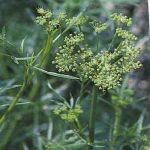| Drug Interactions: |
| Taking asafoetida with these drugs may increase the risk of bleeding or bruising: |
| Abciximab, (ReoPro) |
Antithrombin III, (Thrombate III) |
Argatroban, (Argatroban) |
Aspirin, (Bufferin, Ecotrin) |
Aspirin and Dipyridamole, (Aggrenox) |
| Bivalirudin, (Angiomax) |
Clopidogrel, (Plavix) |
Dalteparin, (Fragmin) |
Danaparoid, (Orgaran) |
Dipyridamole, (Novo-Dipiridol, Persantine) |
| Enoxaparin, (Lovenox) |
Eptifibatide, (Integrillin) |
Fondaparinux, (Arixtra) |
Heparin, (Hepalean, Hep-Lock) |
Indobufen, (Ibustrin) |
| Lepirudin, (Refludan) |
Ticlopidine, (Alti-Ticlopidine, Ticlid) |
Tinzaparin, (Innohep) |
Tirofiban, (Aggrastat) |
Warfarin, (Coumadin, Jantoven) |
| Taking asafoetida with these drugs may increase the risk of hypotension (excessively low blood pressure): |
| Acebutolol, (Novo-Acebutolol, Sectral) |
Amlodipine, (Norvasc) |
Atenolol, (Apo-Atenol, Tenormin) |
Benazepril, (Lotensin) |
Betaxolol, (Betoptic S, Kerlone) |
Bisoprolol, (Monocor, Zebeta) |
| Bumetanide, (Bumex, Burinex) |
Candesartan, (Atacand) |
Captopril, (Capoten, Novo-Captopril) |
Carteolol, (Cartrol, Ocupress) |
Carvedilol, (Coreg) |
Chlorthiazide, (Diuril) |
| Chlorthalidone, (Apo-Chlorthalidone, Thalitone) |
Clonidine, (Catapres, Duraclon) |
Diazoxide, (Hyperstat, Proglycem) |
Diltiazem, (Cardizem, Tiazac) |
Doxazosin, (Alti-Doxazosin, Cardura) |
Enalapril, (Vasotec) |
| Eplerenone, (Inspra) |
Eprosartan, (Teveten) |
Esmolol, (Brevibloc) |
Felodipine, (Plendil, Renedil) |
Fenoldopam, (Corlopam) |
Fosinopril, (Monopril) |
| Furosemide, (Apo-Furosemide, Lasix) |
Guanabenz, (Wytensin) |
Guanadrel, (Hylorel) |
Guanfacine, (Tenex) |
Hydralazine, (Apresoline, Novo-Hylazin) |
Hydrochlorothiazide, (Apo-Hydro, Microzide) |
| Hydrochlorothiazide and Triamterene, (Dyazide, Maxzide) |
Indapamide, (Lozol, Nu-Indapamide) |
Irbesartan, (Avapro) |
Isradipine, (DynaCirc) |
Labetalol, (Normodyne, Trandate) |
Lisinopril, (Prinivil, Zestril) |
| Losartan, (Cozaar) |
Mecamylamine, (Inversine) |
Mefruside, (Baycaron) |
Methyclothiazide, (Aquatensen, Enduron) |
Methlydopa, (Apo-Methyldopa, Nu-Medopa) |
Metolazone, (Mykrox, Zaroxolyn) |
| Metoprolol, (Betaloc, Lopressor) |
Minoxidil, (Loniten, Rogaine) |
Moexipril, (Univasc) |
Nadolol, (Apo-Nadol, Corgard) |
Nicardipine, (Cardene) |
Nifedipine, (Adalat CC, Procardia) |
| Nisoldipine, (Sular) |
Nitroglycerin, (Minitran, Nitro-Dur) |
Nitroprusside, (Nipride, Nitropress) |
Omesartan, (Benicar) |
Oxeprenolol, (Slow-Trasicor, Trasicor) |
Perindopril Erbumine, (Aceon, Coversyl) |
| Phenoxybenzamine, (Dibenzyline) |
Phentolamine, (Regitine, Rogitine) |
Pindolol, (Apo-Pindol, Novo-Pindol) |
Polythiazide, (Renese) |
Prazosin, (Minipress, Nu-Prazo) |
Propanolol, (Inderal, InnoPran XL) |
| Quinapril, (Accupril) |
Ramipril, (Altace) |
Reserpine, (Reserpine) |
Spironolactone, (Aldactone, Novo-Spiroton) |
Telmisartan, (Micardis) |
Terazosin, (Alti-Terazosin, Hytrin) |
| Timolol, (Betimol, Timoptic) |
Torsemide, (Demadex) |
Trandolapril, (Mavik) |
Triamterene, (Dyrenium) |
Trichlormethiazide, (Metatensin Naqua) |
Vasartan, (Diovan) |
| Verapamil, (Calan, Isoptin SR) |
|

